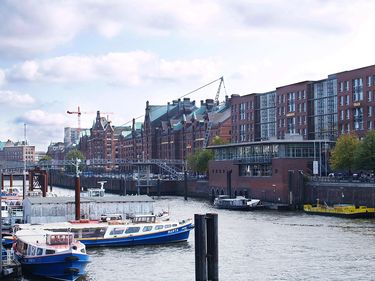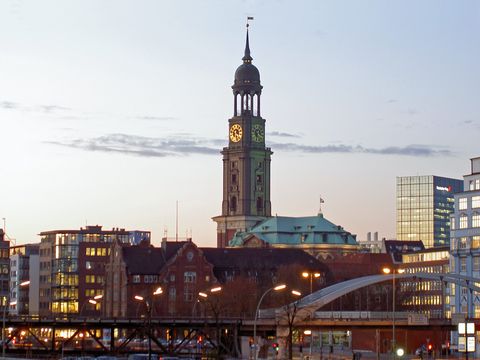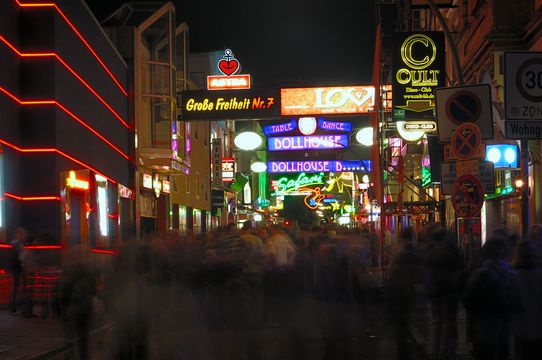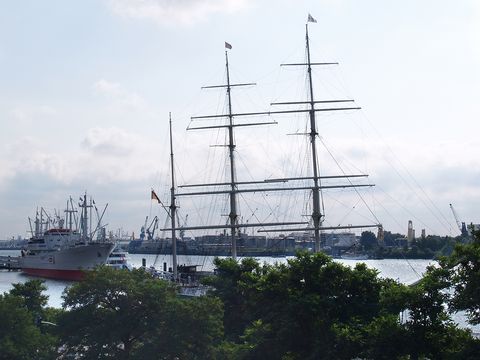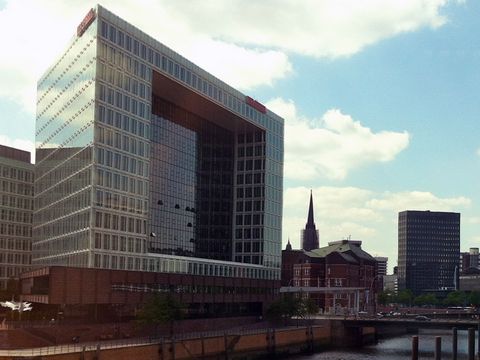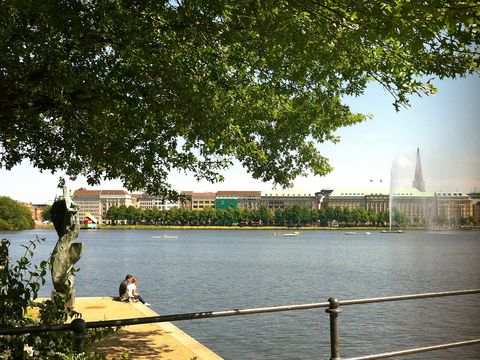Hamburg is situated in the north of Germany between the North Sea and the Baltic Sea. With media groups and major corporations based here, the city is one of Germany's most important economic centres. Hamburg is typically multi-cultural. At the port, you can watch ships setting out to sea – the harbour city is the "gateway to the world"!
Facts
1,847,253 Inhabitants ¹
103,773 Students ²
18 Higher education institutions ²
WELCOME TO HAMBURG
Hamburg lies in the north of Germany. The river Elbe connecting the city with the sea flows right through the middle of the city like a pulsating vein and guarantees the international character of the city. Thanks to the Alster, a lake reservoir right in the middle of the city, the city centre has a spacious and relaxing feel to it. River, beach and sea have always been important to the people of Hamburg.
The Hanseatic City of Hamburg is one of the most important economic centres in Germany. The huge port, the aircraft manufacturer Airbus and a multitude of major corporations are important employers. The city is also an important media centre: lots of publishing companies, editorial offices and television stations are based here.
With 18 higher education institutions Hamburg offers a wide range of opportunities for studying.
Hamburg’s oldest landmark is the St. Michaelis church, affectionately referred to by the locals as “Michel“. Here and in the Speicherstadt, or warehouse district, you can learn about Hamburg’s history and get an idea about the mentality of the locals. Incidentally, the people of Hamburg really do have the same name as the tasty snack! From “Michel“, it’s not far to the “Dom“, which literally means cathedral. However, this is not a place of worship but a huge public festival, which takes place three times a year.
Strolling through the harbour district, you can watch the waves and seagulls, and admire the beautiful landing stages with their green copper roofs. This is where large container ships and colourful boats drop anchor and set off to sea again. At the Fischmarkt, you can try seafood specialities, for example a bread roll filled with North Sea shrimps. Near the harbour is the famous district of St. Pauli. The “Kiez“, or neighbourhood, is the city’s red light district, and the notorious “Reeperbahn“ has always been the playground of sailors, locals and tourists. Numerous clubs, bars and amusements attract all kinds of characters to this colourful neighbourhood.
An important part of the cityscape is the modern Hafencity, a district that has been undergoing redevelopment in recent years. You can see the magnificent “Elbphilharmonie“ from a long way off. Ships passing along the Elbe towards the port of Hamburg can also see the building from a distance.
Football is definitely an important part of life in Hamburg and there are two clubs here: FC St. Pauli has a cult status and a multicultural image and goes back a very long way. The city’s biggest football club, the Hamburger Sportverein, or “HSV“ for short, also has a long, proud history. Football is one of the most popular German hobbies. Young people like to meet in the park to kick a ball around, or they get together to watch a match on TV.
The locals speak a special dialect known as “Plattdeutsch“, or Low German. This is reflected in certain expressions and characteristics in the everyday spoken language. “Waterkant“, for example means coast (high German: Wasserkante). When “Hamburgers“ speak about parts of the city, they say “auf“ (on) rather than “in“, so “on Schanze“ or “on St. Pauli“. And yet they say “in Barmbek“ or “in Grindelviertel“. If you listen carefully, you might notice it. Sadly, fewer and fewer people speak this dialect, and these are usually older people.
Interview
AYANO FROM JAPAN
LIVING IN HAMBURG
Weather in Hamburg can be rather changeable. One moment it’s sunny, the next it looks like rain. You should definitely bring a thick coat with you! At the coast, there’s always a stiff breeze blowing.
You can hop on a boat, and take part in a circular tour of the harbour. The boat passes along the Elbe and “Fleete“ (small channels that branch off the river). You’ll experience the city from a typical perspective: from the water where you’ll see people from “near and far“ barbecuing and relaxing on the banks of the Elbe.
The people of Hamburg like to meet on sunny days on the Elbstrand beach in the district of Övelgönne or at the “Fiction“ park next to the port. The Grindelviertel has lots of parks and gardens where you can relax. If you want to get some exercise, take advantage of the city’s maritime location and try sailing, rowing or “standup paddleboarding“.
The best places to shop are Mönckebergstrasse, Jungfernstieg and the streets near the Alster. The vibrant Sternschanze, or “Schanze“ as locals call it, is a slightly more laid back neighbourhood. Here, you’ll find cafés, bars and restaurants, shops, boutiques, studios and parks.
If you want to go out partying and get to know real locals, you should definitely visit Schanze. There are small clubs here and you’ll soon meet new people. The people here come from all kinds of cultures but together share the Hamburg mentality.
#FairCity #LeibnizButterBiscuit #CenterForScienceAndBusiness
